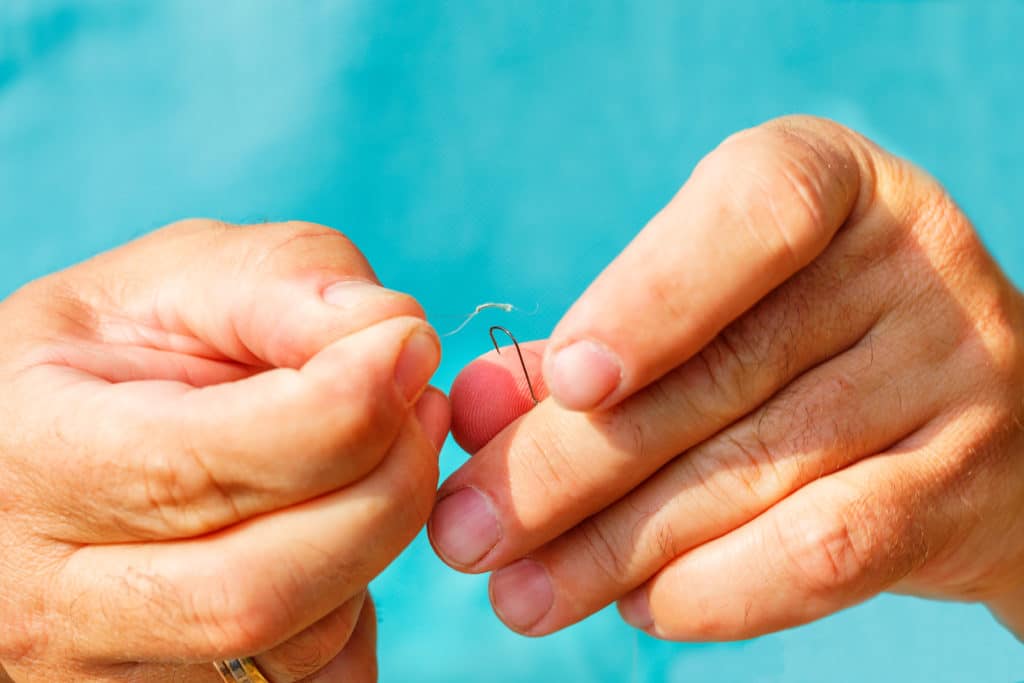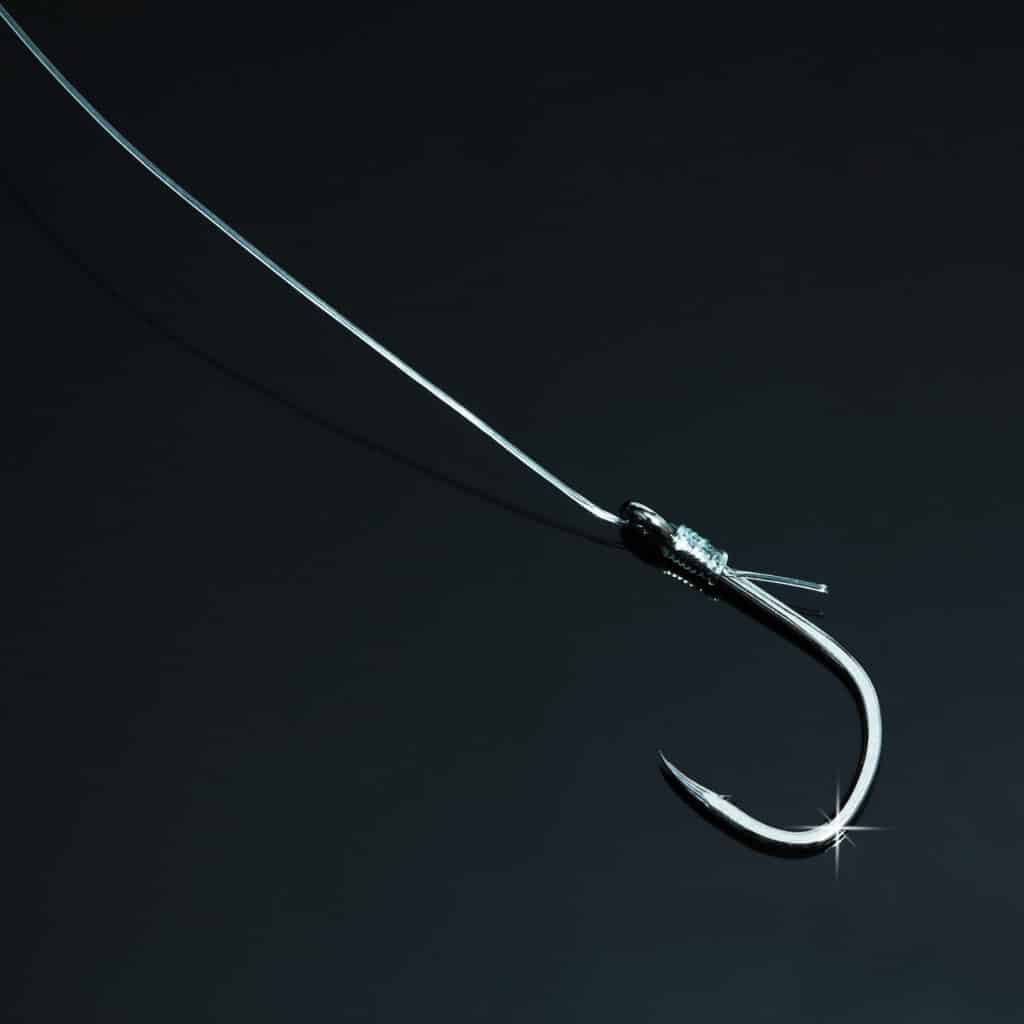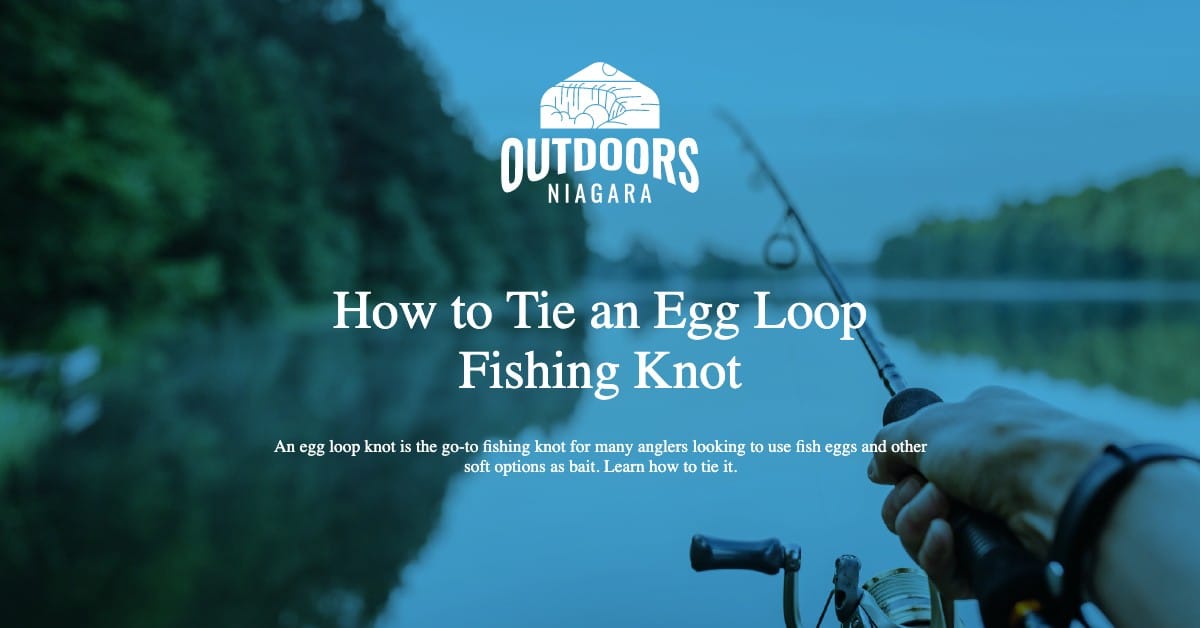An egg loop knot is the go-to fishing knot for many anglers looking to use fish eggs and other soft options as bait.
While most commonly used for salmon fishing, this is a versatile fishing knot and is often seen in steelhead fishing and for fishing herring and anchovies.
The knot is fairly easy to tie and conducive to almost all types of fishing lines and spinning reels.
In this article, we’ll provide step-by-step instructions on how to tie this basic fishing knot correctly and get you hooking some monster steelies in no time.
So without further ado, let’s take a look at how to tie an egg loop fishing knot so you can get fishing!

Contents
The Perfect Egg Loop Fishing Knot Instructions
Much like most aspects of fishing, learning something new for the first time can be tricky.
But, with a little practice and following the steps, it will become much easier.
Tip: You want to avoid any slack at all, so be sure to keep everything tight.
Step 1
Firstly, the egg loop knot requires a fair bit of leader, anywhere between 16 to 22 inches.
You’ll become more familiar with the exact amount you require as you become more experienced at tying this knot.
Thread your leader through the eye of the hook.
You must thread your line from front to back so that the line runs down the long, outer side of the hook.
If it’s not, simply remove it and thread in the opposite direction.
Once your leader reaches the start of the curve of the hook, stop threading and hold the line firmly against the hook.
Step 2
The line you’re holding down the back of the hook is called the vertical line.
You will be working with the running line, which is the other end.
Take the first part of the line that has not been threaded into the hook yet and wrap it around the neck of the hook’s eye and the vertical line.
Remember, you want to keep this fairly tight.
Continue to wrap downward toward the curve of the hook until you’ve completed around 8 to 10 neat wraps. Hold the wrap firmly.
Step 3
Next, find the end of the running line and thread it through the eye of the hook in the opposite direction from the standing line you did earlier.
This line should be threaded from the back of the hook to the inside but in an upward direction.
You also want this to be lined up with the standing line that is already wrapped.
Leave about an inch or two of the running line sticking out the eye of the hook once you thread it.
Step 4
Here’s when it starts getting a little tricky, so take it slow.
Next, you want to go back to the point of the running line you were using to wrap the vertical line, hook together, and continue wrapping.
Now, you will be wrapping the standing line, hook, and running line altogether.
Complete another 5 to 7 wraps and keep these wraps moderately tight.
You should now notice that the running line is wrapped 5 to 7 times and then overlapping the 8 to 10 wraps holding just the vertical line and hook.
Step 5
Next, you will locate the lead end (the one or two inches you threaded upward).
Pull this the entire way through. As you do so, you will notice the line and wraps tightening.
Keep a grip on these and ensure that there are no overlapping wraps or slack.
You’re going to want to guide the knots with your thumb and index fingers with a pinching action while pushing them upward toward the eye of the hook.
You should notice the wraps starting to line up perfectly and tighten.
You can now trim the additional line, and your egg loop knot is ready to go!

When To Use An Egg Loop Knot
As mentioned earlier, these knots are ideal for soft baits that may be difficult to thread directly onto a hook.
By creating a loop in the line, the soft textured bait can be easily secured and eliminates the chance of sliding off the hook due to the water current.
Examples of common soft bait options that are used with this knot are:
- Fish eggs or roes – Excellent baits, most commonly used to catch salmon and steelheads.
- Chicken products such as liver – These are widely used for fishing catfish.
- Lures and flies – The bait can move more freely and look more realistic, which is perfect for jig fishing.
- Guts – Shellfish guts and fish intestines.
Benefits Of Using An Egg Loop Knot
Here are some of the main upsides you can expect when you use an egg loop knot for fishing.
More Natural Bait Movement
Loop knots allow for a more natural bait movement, especially with lures and flies, compared to other more rigid fixed connections.
Bait on the loop knot can slide and float more freely.
A more natural movement of your bait will result in more takes and, ultimately, more catches.
Fewer Breaks in Knots
Some loop knots are widely considered stronger than fixed connection knots, such as the clinch knot variations or the Orvis knot. In addition, loop knots will not degrade your leader’s or tippet’s strength.
Fasting Sinking
While more noticeable in still waters, adjustable knots like the egg loop knot can allow for heavier bait and lures to sink faster. This, combined with the free movement allowed by the knot, makes for a perfect weapon to target their desired species effectively.
Conclusion
The egg loop knot is a versatile and flexible type of fishing knot used by anglers in many different terrains.
Known for its implacable strength and simplicity, this knot is most commonly used on soft bait types that are more difficult to attach directly to a fishing hook, such as fish eggs, sardines, and herring.
In addition, egg loop fishing knots work fantastically with artificial baits such as lures and flies because they allow for a more natural movement in the water.







